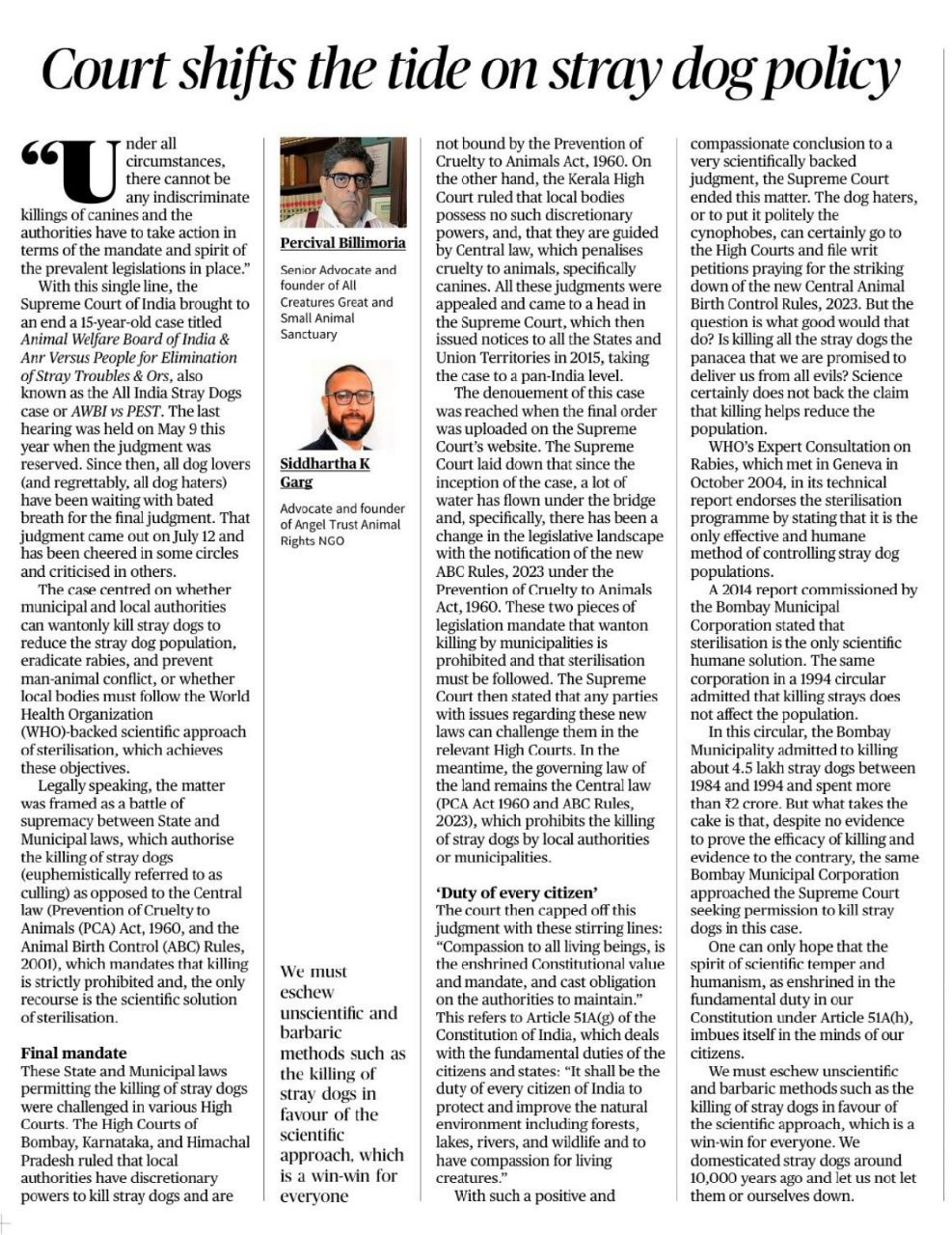Supreme Court Ruling on Stray Dog Policy
- Overview of the Case:
- The Supreme Court of India delivered a landmark judgment on July 12, 2024, concluding the 15-year-old case Animal Welfare Board of India & Anr Versus People for Elimination of Stray Troubles & Ors (AWBI vs PEST).
- The core issue was whether local authorities could cull stray dogs to manage their population and reduce rabies, or if they should adhere to the central mandate of sterilisation as outlined by the Prevention of Cruelty to Animals (PCA) Act, 1960, and the Animal Birth Control (ABC) Rules, 2001.
- Judgment Summary:
- The Supreme Court ruled that indiscriminate killing of stray dogs is prohibited under the PCA Act and ABC Rules.
- The court emphasized that the legislative framework mandates sterilisation as the method for managing stray dog populations, aligning with scientific recommendations and international best practices.
- It acknowledged the changes in the legislative landscape with the introduction of the new ABC Rules, 2023, which reinforce the prohibition on culling and advocate for sterilisation.
- Legal Context:
- Central Laws: The PCA Act, 1960, and the ABC Rules, 2023, which prohibit the killing of stray dogs and mandate sterilisation.
- State and Municipal Laws: Some local laws permitted culling, which were challenged and reviewed by various High Courts.
- Bombay, Karnataka, and Himachal Pradesh High Courts allowed local authorities to cull stray dogs.
- Kerala High Court restricted local authorities, mandating adherence to central laws.
- Key Points from the Supreme Court Ruling:
- The court underscored that any challenges to the new ABC Rules should be directed to the relevant High Courts, while the central laws remain in force.
- It highlighted the Constitutional mandate of compassion towards all living beings under Article 51A(g), reflecting the fundamental duty of citizens to protect the environment and animals.
- Scientific and Humanitarian Considerations:
- The ruling aligns with scientific consensus that sterilisation, rather than culling, is the humane and effective method for controlling stray dog populations.
- The World Health Organization (WHO) and various studies, including a 2014 report by the Bombay Municipal Corporation, support sterilisation as the only effective method.
- Evidence suggests that culling does not effectively reduce stray dog populations and may be a waste of resources.
- Implications and Future Directions:
- The ruling reinforces the shift towards humane and scientifically backed methods for managing stray dogs.
- It reflects a broader commitment to upholding animal welfare and environmental protection as enshrined in the Indian Constitution.
- Future challenges to the ABC Rules can be addressed in High Courts, but the Supreme Court’s judgment sets a clear precedent against indiscriminate culling.
Conclusion:
- The Supreme Court’s decision marks a significant step towards humane treatment of animals and adherence to scientific principles in managing stray dog populations.
- It underscores the importance of compassion and legal compliance in animal welfare policies, guiding future actions and legal interpretations in this area.
Mains Practice Questions |
1. Discuss the Supreme Court’s judgment in the case of Animal Welfare Board of India & Anr Versus People for Elimination of Stray Troubles & Ors. How does this ruling reflect the principles of humane animal management and scientific temper as outlined in Indian legislation and the Constitution?
2. Analyze the implications of the Supreme Court’s decision to prohibit the indiscriminate killing of stray dogs and mandate sterilisation as per the ABC Rules, 2023. How does this ruling address the concerns of both animal welfare and public health, and what are the potential challenges in implementing this policy at the local level? |


